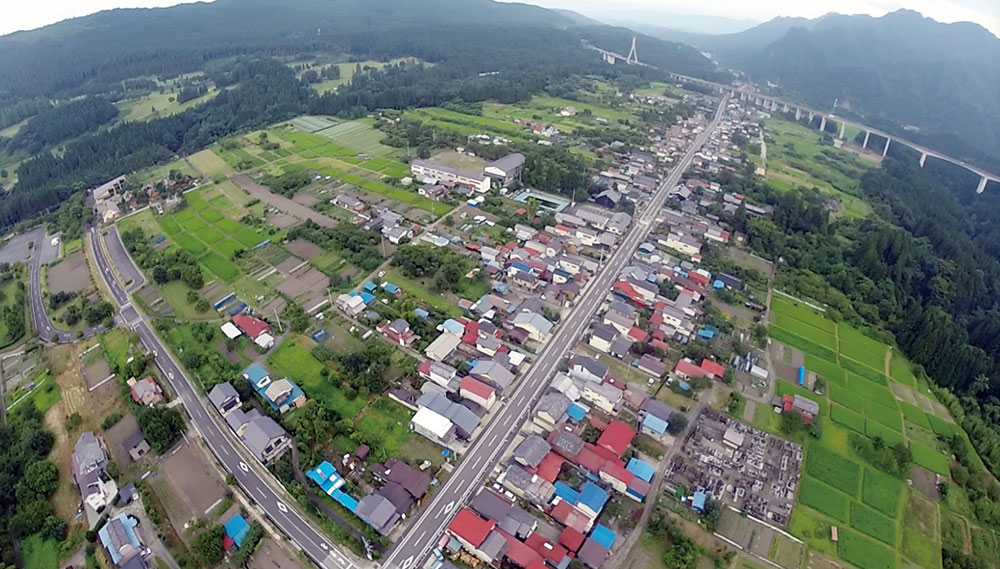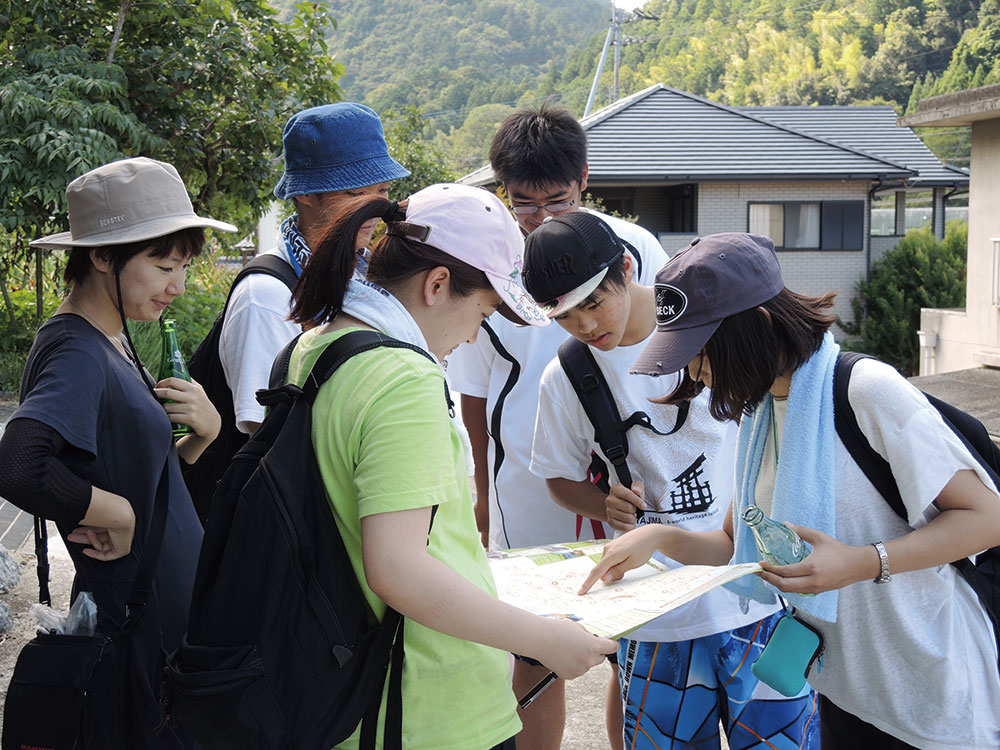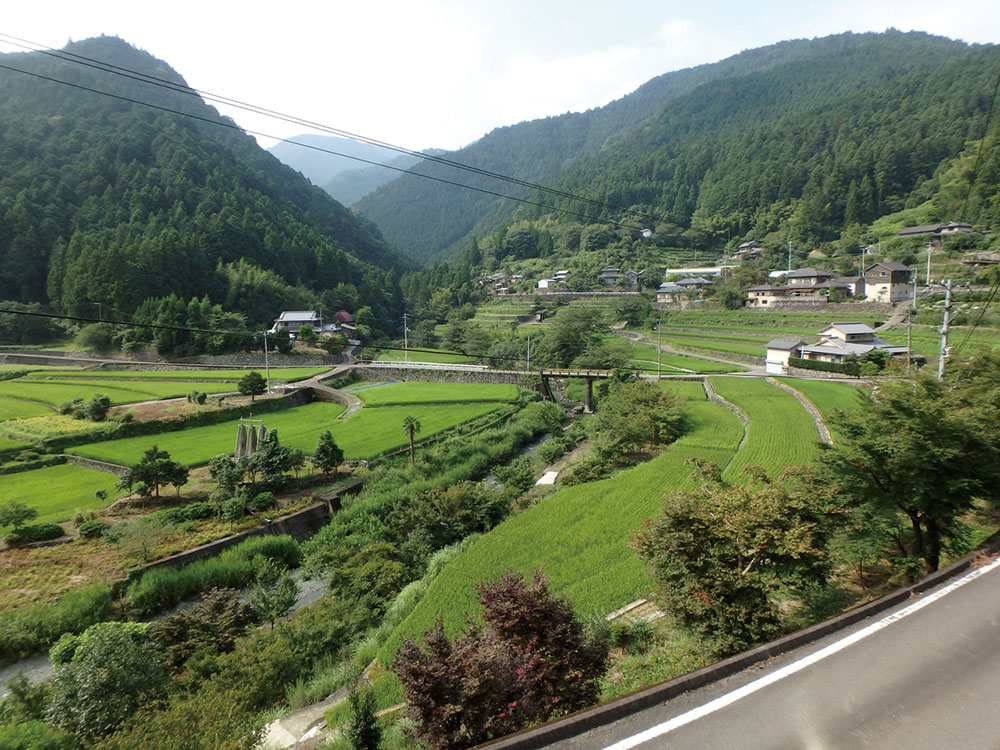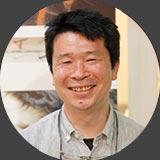Professor
Graduate School of Media and Governance
The modern times call for sustainable development, and methods of landscaping aimed at achieving symbiosis between humans and nature has become an important theme.
Amidst the advancing decline of the rural population, the method of uncovering the potential resources of the area and applying these resources to landscape design* can be regarded as a form of technology that connects the past and the future.
Professor Hajime Ishikawa has studied settlements and regions where production and life have been sustained for more than a thousand years. Through his research, he explores landscape design that is able to strike a balance between human beings and nature, and take the greatest advantage of its value while maintaining its appeal permanently.
*Using the original elements of the land as the foundation for designing and building the landscape, including city spaces, garden spaces, and streets.
Creating a tranquil landscape based on the concept of practical landscaping
I have been involved in the design of landscapes for many years. Based on that experience, I now conduct research on the design of “places that people live in” and “places that people exist in.”
When confront a subject in my position as a landscape designer, I always make sure that I give temporal and spatial consideration to factors that have an impact on the subject over a wider area. By doing so, I have always devoted myself to exploring how I can create a landscape that is easy to maintain, and how I can create a high-quality landscape as a form of spatial design.
Let us consider this by taking the example of plants, which is an important constituent of a landscape. If large trees are present in the target area, it is an indication that the area has managed to sustain a good environment to enable the growth of trees over a long period of time. Hence, by giving temporal and spatial consideration to the wide-area factors in this way, I am able to create a sustainable landscape design. Furthermore, through the power of design, if we were able to develop the surrounding environment such that people would want to care for it involuntarily, I believe that we would be able to further enhance sustainability.
When “existing soil, climates, and vegetation” and the “expectations of human beings” gradually find common ground in such ways and become optimized, bringing about a state of “dynamic equilibrium,” a tranquil landscape is born. This concept of practical landscaping then works to create high-quality spaces.

The Millennium Village Project triggered by an earthquake disaster
In recent years, I have been involved in a Millennium Village Project undertaken jointly by research laboratories from several universities. A “Millennium village” refers to settlements or regions that have successfully sustained production and life for more than a thousand years, overcoming numerous disasters and social transformation.
By uncovering the “Millennium villages” that are scattered across Japan, studying them, and publishing the results of our studies, this project aims to consider the ways of long-term living environments in the future, and put them into practice.
This project was triggered by the Great East Japan Earthquake that struck in 2011. Immediately after the earthquake disaster, various architect groups commenced activities in aid of reconstruction efforts. However, we attempted to take a slightly different approach from such activities. In the course of our studies and reviews, we did not focus on “villages that have been damaged” as the role of our group from the architectural history perspective of looking at objects over the long-term; rather, by studying “villages that have not been damaged,” we came up with the idea that it may be more important to explore the secrets behind the strength of such villages. This was the start of studies into settlements and regions that have continued to sustain production and life for more than a thousand years. Since 2014, we have based our research in the Kanto and Kansai regions, and researchers, practitioners, as well as students from various research fields have been running this project based on the themes of environment, settlements, and communities.

Millennium Village Project
Triggered by the Great East Japan Earthquake that struck in 2011. The aim of the project is to uncover and study “Millennium villages” scattered across Japan, publish the results of these studies, consider the ways of long-term living environments in the future, and put them into practice. Research activities are based in the Kanto and Kansai regions.
Fieldwork that connects the “insect’s-eye view” and the “bird’s-eye view”
When selecting potential candidate regions for the Millennium Village Project, we used the Wamyo Ruijusho, a dictionary written during the Heian era, as our basis. This book contains the names of approximately 4,000 locations of townships “gou” (lowest unit of administration under the ancient political system of Ritsuryo codes), which were under government management at the time. From these, we plotted 1,977 locations in Google Earth, based on identification studies conducted by scholars of toponymy (the study of place names). In short, this work involved searching for ancient place names on modern-day maps, and plotting them on the maps. We evaluated these regions based on four perspectives—the three key elements of production, community, and transportation, and in addition, the settlement structure that is formed through these three key elements, and conducted detailed studies in the field for areas that matched our selection criteria.
Prior to conducting the detailed studies, we conducted preliminary studies using literature such as geological and topographical maps, as well as vegetation maps. Studies were conducted in cooperation with the residents of the villages over a span of several days, and we conducted interviews and organized workshops to verify, together with the local residents, if the hypothetical “sustainability factors” that we had come up with were correct.
Drones were utilized in our field research. Drone images, which present a clear image of the settlement’s structure and land use, are a revolutionary tool that allows us to capture the characteristics of the village in a short time. Hence, by connecting such “insect’s eye-view” and “bird’s-eye view,” we succeeded in capturing an overall view of the villages intuitively and with concreteness.
-

Making a Guide Book
As a part of the “project to pass the town to future generations” that is currently being implemented in Kamiyama Town, Tokushima Prefecture, the research team is producing illustrated reference books featuring the landscape of the town as well as its lifestyle, an appreciation guidebook of the region, and other materials. The team visits the research field, and conducts interviews and other activities to obtain resources for these materials.
How should we live out our lives in the next 1,000 years?
As we continued with these studies, the characteristics of settlements that have continued to survive for more than a thousand years gradually emerged into view. Although we are still in the process of conducting research, we have identified some apparent elements of a high-quality “Millennium village,” such as diverse land use in the village areas, and elaborate land use that is tailored to the topography, geology, and natural environment.
For example, if we were to look at the Boso Peninsula, we can see that the elements of hills and mountains, water, settlements, paddy fields in lowlands, and the sea exist as a “package,” and people subsist by utilizing these resources exhaustively. This “wisdom for the sake of survival” exists on varying scales, such as at the watershed level, settlement level, and home level. We call these sustainable elements of the living environment a “landscape for survival.”
The Great East Japan Earthquake has taught us that when city infrastructure is cut off, life cannot keep going across wide areas for a long period of time. From this perspective, “Millennium villages” that have developed a “landscape for survival” can also be perceived as disaster-ready cities that have prepared a massive storage battery beforehand, so to speak.
Particularly in light of the frequent occurrence of natural disasters and advancing depopulation today, we should learn from the ways of settlements that have continued to survive for more than a thousand years, and consider how we can live out our lives in the next 1,000 years.

Developing human resources who can harness the concept of practical landscaping as a tool
My research laboratory is currently engaged in a project to search for a “landscape for survival” in Kamiyama Town, Tokushima Prefecture, while applying the methods used in the Millennium Village Project. This town is a mountainous one spread across the banks of Akuigawa River, a tributary of Yoshinogawa River. It has a population of approximately 6,300 people, and the population aging rate has already reached 46%. However, in recent years, companies headquartered in major cities have begun to establish offices in this depopulated mountain village, drawing in settlers and other companies. Young people working in IT companies are now utilizing old folk dwellings that are 150 years old as their office spaces.
Rather than placing such a beautiful landscape in “cold storage,” this town has retained the rich characteristics of a “Millennium village” while updating its lifestyle to meet the demands of the times.
As part of our “project to pass the town to future generations” in Kamiyama Town, my research laboratory is producing illustrated reference books of the landscape and lifestyle, an appreciation guidebook of the region, and other materials. There are also plans to design and produce several types of media aimed at considering the thousand years to date, and the thousand years going forward.
In the future, I hope to pursue the concept of practical landscaping in a broader sense through such activities, while staying in the interdisciplinary environment of SFC (Keio University Shonan Fujisawa Campus). Through dialogues and activities with students, I also aim to develop human resources who are able to harness the concepts of landscape design as a tool, and send them out into society.





